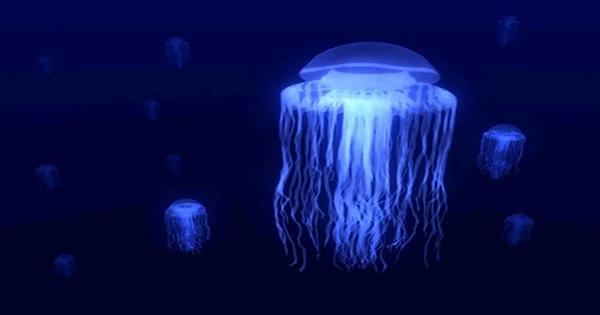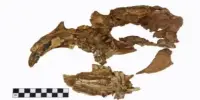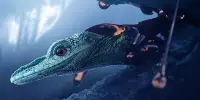If animals of the deep with too many tentacles that dwell in eternal darkness aren’t normally your style, let us entice you with this magnificent new deep-sea crown jellyfish species. Meet Atolla reynoldsi, a spectacular scarlet deep-sea alien with 26 to 39 tentacles that lives in the ocean’s “midnight zone,” as discovered by Monterey Bay Aquarium Research Institute (MBARI) biologists in the seas off California.
Atolla is a genus of relatively common deep-sea crown jellies that is fairly easy to spot (for those who can see through the inky blackness of the midnight zone, where no sunlight passes through) due to the color of its bell (red appears black in the deep sea) and the fact that it has one tentacle that is much longer than the others. MBARI researchers were intrigued when they first saw one 15 years ago that didn’t have the tell-tale long appendage. They have now formally identified the big new jelly, designating it A. reynoldsi after the very first volunteer at the Monterey Bay Aquarium, in a study published in Animals.
Atolla species are found all over the world, and the majority of them feature a single trailing hypertrophied tentacle that can grow up to six times the diameter of the jelly’s bell (the umbrella-shaped jelly dome part of the body). According to previous studies, this is done to catch unwary prey, such as siphonophores, long string-like organisms, or crabs, for a nice dinner. Researchers concluded they were looking at at least one, but most likely three, new species of Atolla after 15 years and thousands of hours of video footage viewing at least three Atolla-like jellies without one.
Two more are mentioned in the study, although there aren’t enough samples to properly define them just yet. A. reynoldsi, on the other hand, is said to be one of the biggest in the species, with a diameter of roughly 13 centimeters (5.1 inches). It also features a rough bell with warty papillae and spiky ridges that have only been seen on one other Atolla. It even has a characteristic stomach, shaped like a Greek cross, according to the experts.
They also observed that counting tentacles isn’t a good approach to identify a species, because A. reynoldsi has anywhere from 26 to 39 tentacles. Although its deep red hue helps it conceal in plain sight at depths of 1,013 to 3,189 meters, MBARI researchers have only seen ten examples of the new jelly in total, indicating that it is not widespread (3,323 to 10,463 feet).
“These amazing new jellies show how much we still don’t know about the deep water.” “We learn something new almost every time we dive into the depths of Monterey Bay,” said George Matsumoto, MBARI Senior Education and Research Specialist and main author on the research. Over the previous 34 years, MBARI has identified 225 new species in Monterey Bay and beyond, with no indications of slowing down and at least two more new species waiting to be verified. “MBARI’s mission to better understand the ocean is more important than ever, as the deep sea and the species that reside there are more threatened. “We can’t safeguard deep-sea life until we first understand it,” Matsumoto added.
















